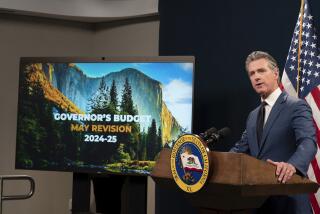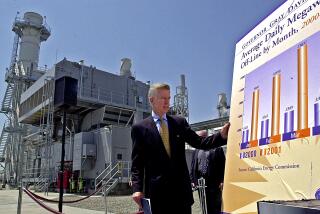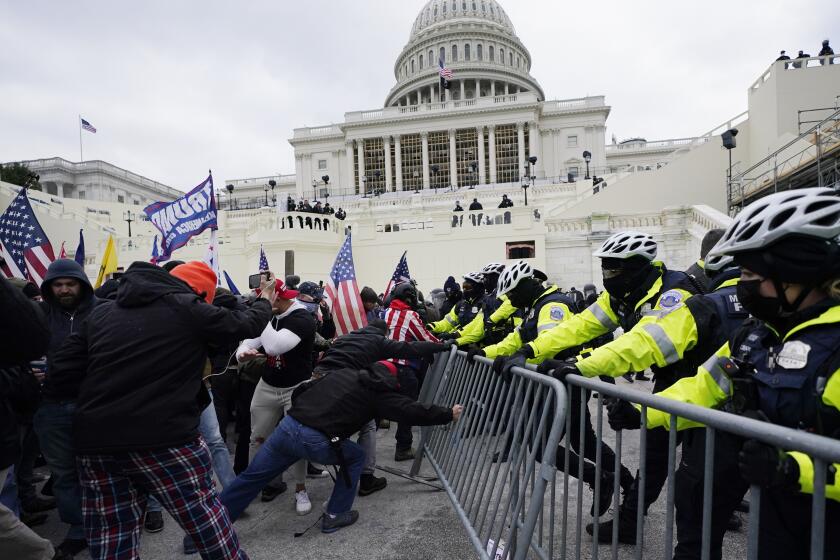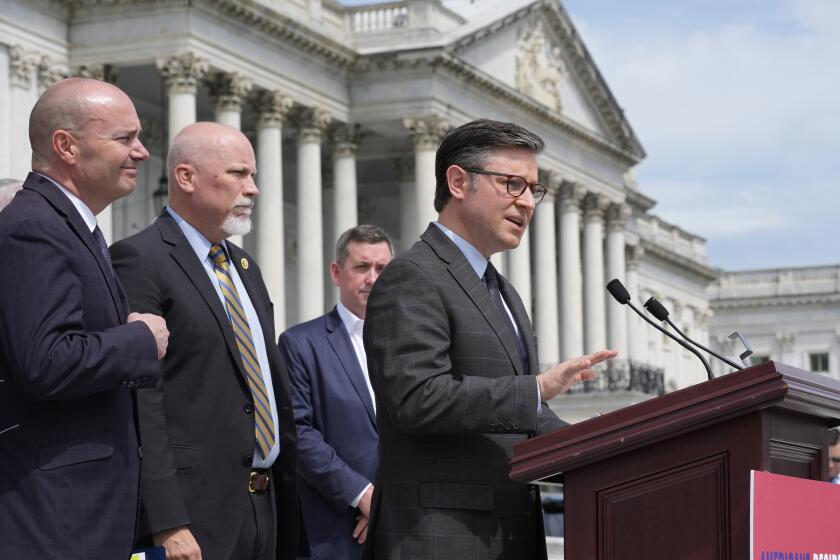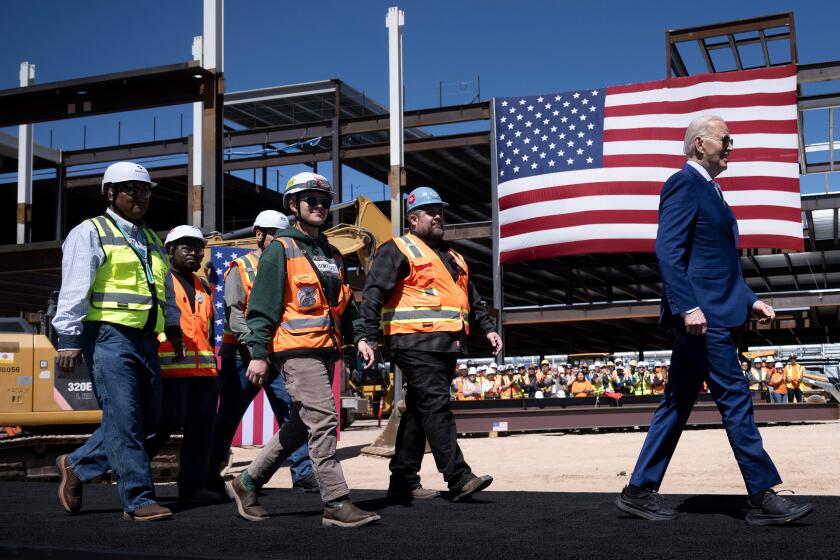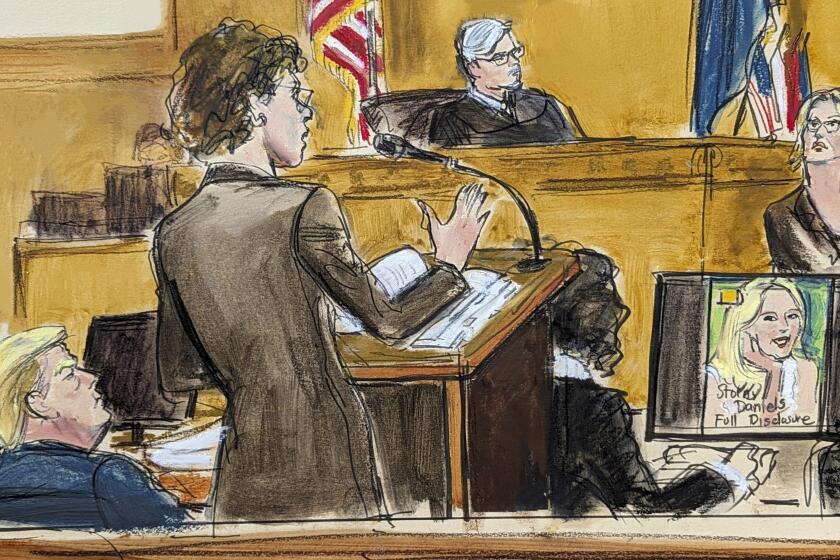SPECIAL REPORT * In L.A.’s 7th and 14th council districts, the expected low turnout emphasizes not only the key role of habitual ballot-casters, but . . . : The Power of Occasional--or New--Voters
Yolanda Fuentes, 24, was born and raised in Pacoima and registered to vote when she turned 18, but only recently did she get interested in city politics.
Angeles Reynoso, 30, and her family moved to Eagle Rock from Palmdale about four years ago. She and her husband missed the last municipal election, but are determined to cast ballots for a new council member on April 13.
In a more traditional municipal election, these women, considered “casual” or “occasional” voters by political strategists, would not get a lot of attention from candidates. The bulk of the campaign mailers and telephone calls would go to longtime voters who regularly turn out for local elections.
But in these contests--Fuentes lives in the east San Fernando Valley’s 7th District and Reynoso in the Eastside’s 14th District--the newer or less regular voters also are getting the campaign equivalent of a full court press.
That is in part because, with both seats open, the districts have attracted large numbers of candidates--13 plus a write-in candidate in the 14th and six plus two write-ins in the 7th--who must try to bring out an expanded pool of voters. Both districts also are home to increasing numbers of Latino voters, including numbers of naturalized citizens only recently eligible to go to the polls.
“In these close races with many candidates and lots of activity, the ‘traditional nonvoters’ [those who register but do not often cast ballots] could have a tremendous impact,” said Fernando Guerra, who heads the Center for the Study of Los Angeles at Loyola Marymount University.
A group that could be especially pivotal are the immigrants who have become citizens and registered to vote in the last four or five years, he added.
“They have a very high tendency to vote and they are very easy to identify and to communicate with,” Guerra said. He cited Spanish-language radio and television as key, inexpensive vehicles for reaching these voters, who he said make up 30% to 40% of all the Latinos who have registered in the last four years.
A Times exit poll taken during the 1997 city primary found that election--which included a massive school bond measure--was the first for 16% of Latino voters.
Even with the new voters, however, the fact remains that the elections will almost certainly be decided by just a fraction of the roughly 200,000 to 250,000 residents of each of the council districts. There are about 63,000 voters in the 7th District and about 72,000 in the 14th. Well under half the voters typically turn out for city elections in these districts, even when there are hot contests.
In the hard-fought June 1993 runoff for the 7th District seat vacated by longtime Councilman Ernani Bernardi, for example, 39.5% of voters decided the close race, giving then-mayoral aide Richard Alarcon a 234-vote margin of victory over firefighter union official Lyle Hall. Alarcon’s victory also put a Latino in the seat for the first time and brought a third Latino to the 15-member council.
In a special election in December 1985 to replace Councilman Art Snyder, who had resigned his 14th District seat, the seven-candidate field drew a 33% turnout. In garnering 60% of the vote, Richard Alatorre became the first Latino to hold the seat in more than two decades. The last time he won reelection, in the 1995 primary against a single candidate, the turnout was less than 20%.
The strategists directing campaigns in these districts know they have to identify those modest-sized caches of voters who are going to decide the fate of their candidates. They all know a key factor is someone’s voting history. Even in districts with large numbers of new, highly motivated voters, no candidate can afford to ignore the core of faithful voters who have gone to the polls or mailed in a ballot in election after election.
To find these voters, The Times used voter registration data provided by Bruce Cain of UC Berkeley. A review of the data by Richard O’Reilly, Times director of computer analysis, and interviews with likely voters helped define the shifting battlegrounds in each district.
The 14th District includes the heavily Latino Eastside communities of working-class Boyle Heights--with its increasing numbers of immigrants--and El Sereno, a more stable, largely middle-class area. It has only been in the last couple of years, however, that Latinos made up a voting majority in the district, Loyola’s Guerra noted. Until then, whites in Highland Park and, especially, Eagle Rock dominated the elections in the district where well over three-quarters of the residents are Latino.
“During his last two elections, Art Snyder got only 20% of the Latino vote but won with polarized Anglo majorities in Eagle Rock and some in Highland Park,” Guerra said.
But with Alatorre’s election and the election of Latinos to virtually every other office covering the district, from supervisor to Congress, whites became “very used to Latino candidates,” Guerra said.
“They voted Latino, and the world hasn’t ended. Latinos are their neighbors, their friends. There is no longer the polarized vote that people used to think about.”
Political strategists estimate that Latinos make up 55% of the voters in the 14th District; about 5% are Asians and the rest are whites.
In the 7th District, which includes the working-class communities of Sun Valley and Pacoima and parts of the more affluent Sylmar and Mission Hills, Latinos have not yet become the voting majority, but Guerra and other political experts believe it is possible they will with the coming city primary.
“Two of the major candidates are Latino, and there has been lots of registration activity,” Guerra said.
Political analysts believe Latinos account for close to half of the district’s voters, with African Americans representing about 10%, Asians about 4%, and whites the rest.
Some young voters, such as Fuentes, a recent graduate of Cal State Northridge, are drawn to politics by candidates of their own generation. Fuentes said she is supporting legislative aide Alex Padilla, 25, precisely because of his youth--and the fact that she attended San Fernando High School with him.
“He is such a role model,” Fuentes said. “If he is elected, young people will not be afraid to approach their councilman. He will draw them into the process.”
But voters as a whole tend to be older, cleave to middle-class values--and own their own homes.
“What I find in any place is the most likely group of voters are going to be older and longtime homeowners. I don’t care what district or what city it is,” said Jim Hayes, who heads Political Data Inc., a nonpartisan vendor of voter histories. Many consultants in local races buy voter lists from Hayes because he has carefully tracked voter behavior in Los Angeles city races.
A precinct walk through Boyle Heights one recent Saturday afternoon revealed some of the issues that are on voters’ minds.
“Kids need the fundamentals of life,” said Eric Gonzales, a music producer who grew up in this neighborhood and who wants to see programs that would provide alternatives to the youths who hang out on the streets and get into trouble.
Danny Perez, who lives a block away from Gonzales, agrees.
“There are a lot of kids--and some older guys, too--who smoke pot and drink around here. They need a new direction,” said Perez. He had not yet decided who would get his vote, but he volunteered about incumbent Alatorre and the investigations into some of his activities that “this is a good time for him to go.”
Gabriela Gallegos said she doesn’t like the graffiti that pops up on neighborhood fences.
And Armando Olmos seemed astounded by the number of candidates. “It’s anybody’s race,” he said, adding that he favors Deputy Dist. Atty. Nick Pacheco, who still lives in this neighborhood, where he grew up.
What voting histories miss are the individual circumstances that can make all the difference on election day. Take Reynoso, the Eagle Rock resident who moved to Los Angeles from Palmdale. She and her husband, Raul Reynoso, both work for the city, a fact that makes them more likely to be plugged into and interested in municipal affairs than their voting histories would suggest.
Moreover, Angeles Reynoso grew up near USC and has family in the area, and the couple lived in Boyle Heights when they were younger. They left for the more affordable Antelope Valley only because they wanted to buy a home, and they commuted until they had built enough equity in their house to move back into the district, this time as homeowners.
“I love this neighborhood,” said the mother of three. “It’s very quiet and hilly, close to Highland Park, and the people here are very proud of it. They take pride in their homes.”
She said she and her neighbors want more police patrols at night, programs for neighborhood youths and a council member they can count on to “keep up the streets.”
Will the Reynosos vote on April 13? “Absolutely!”
More to Read
Get the L.A. Times Politics newsletter
Deeply reported insights into legislation, politics and policy from Sacramento, Washington and beyond. In your inbox three times per week.
You may occasionally receive promotional content from the Los Angeles Times.

